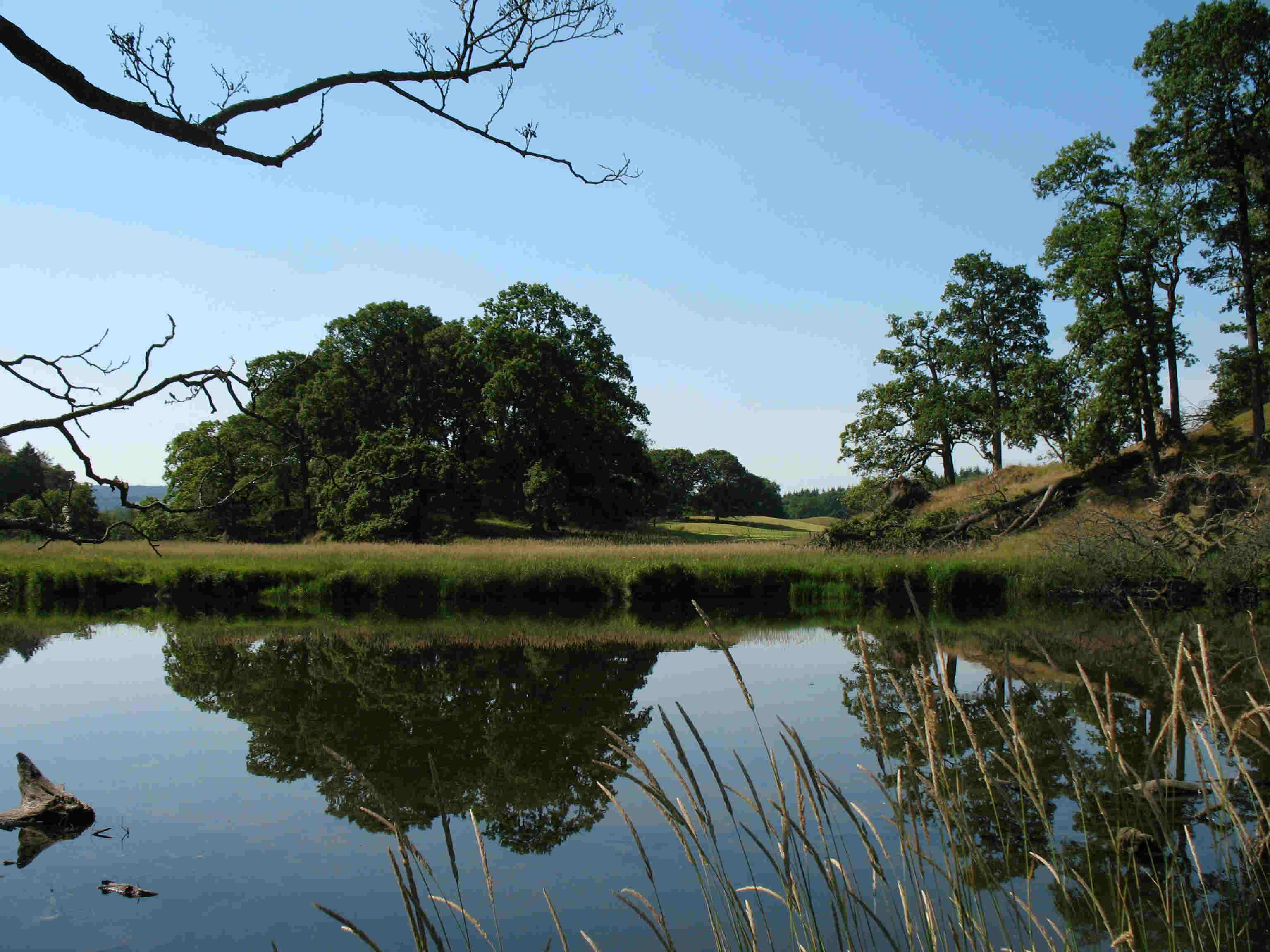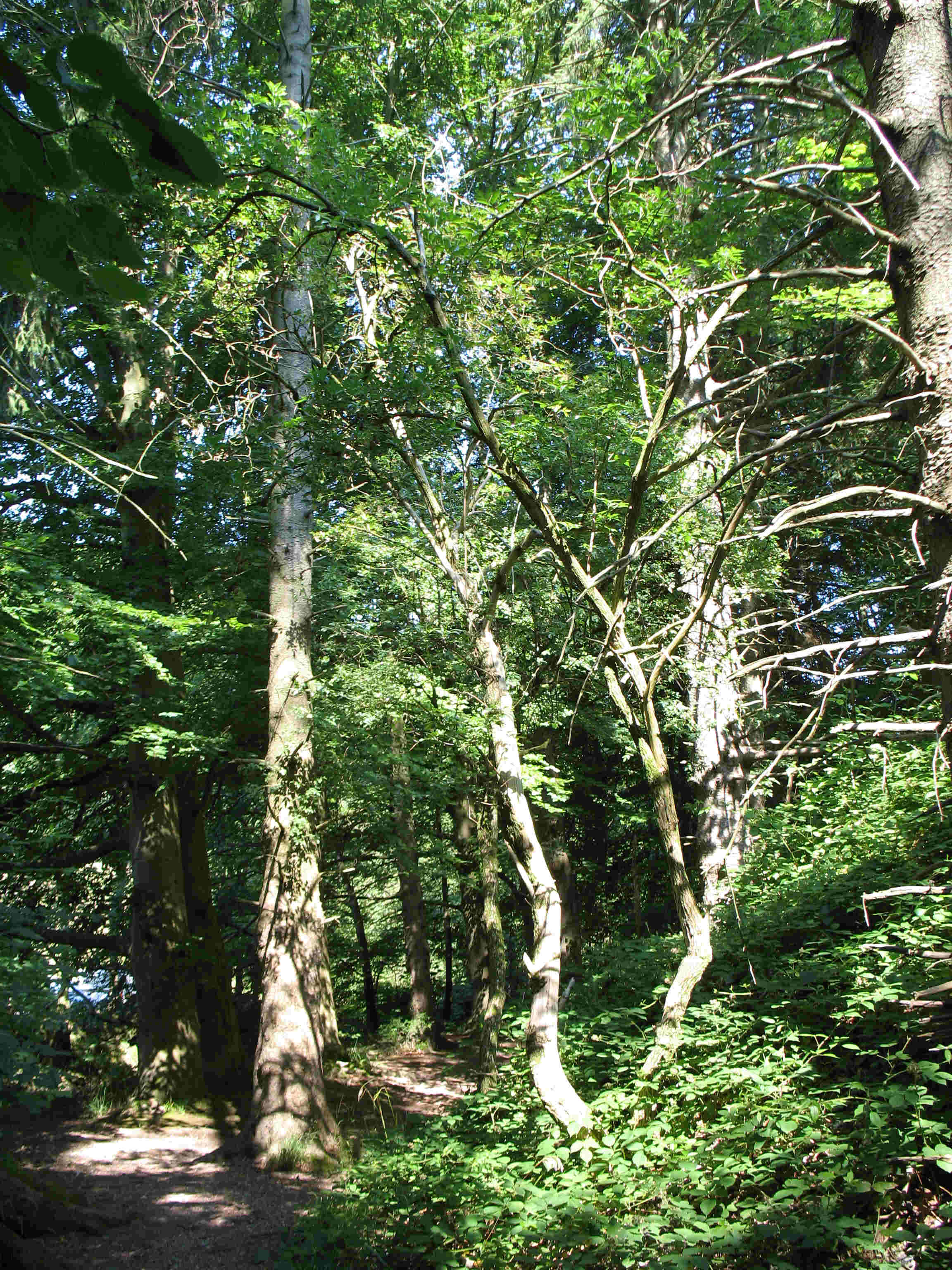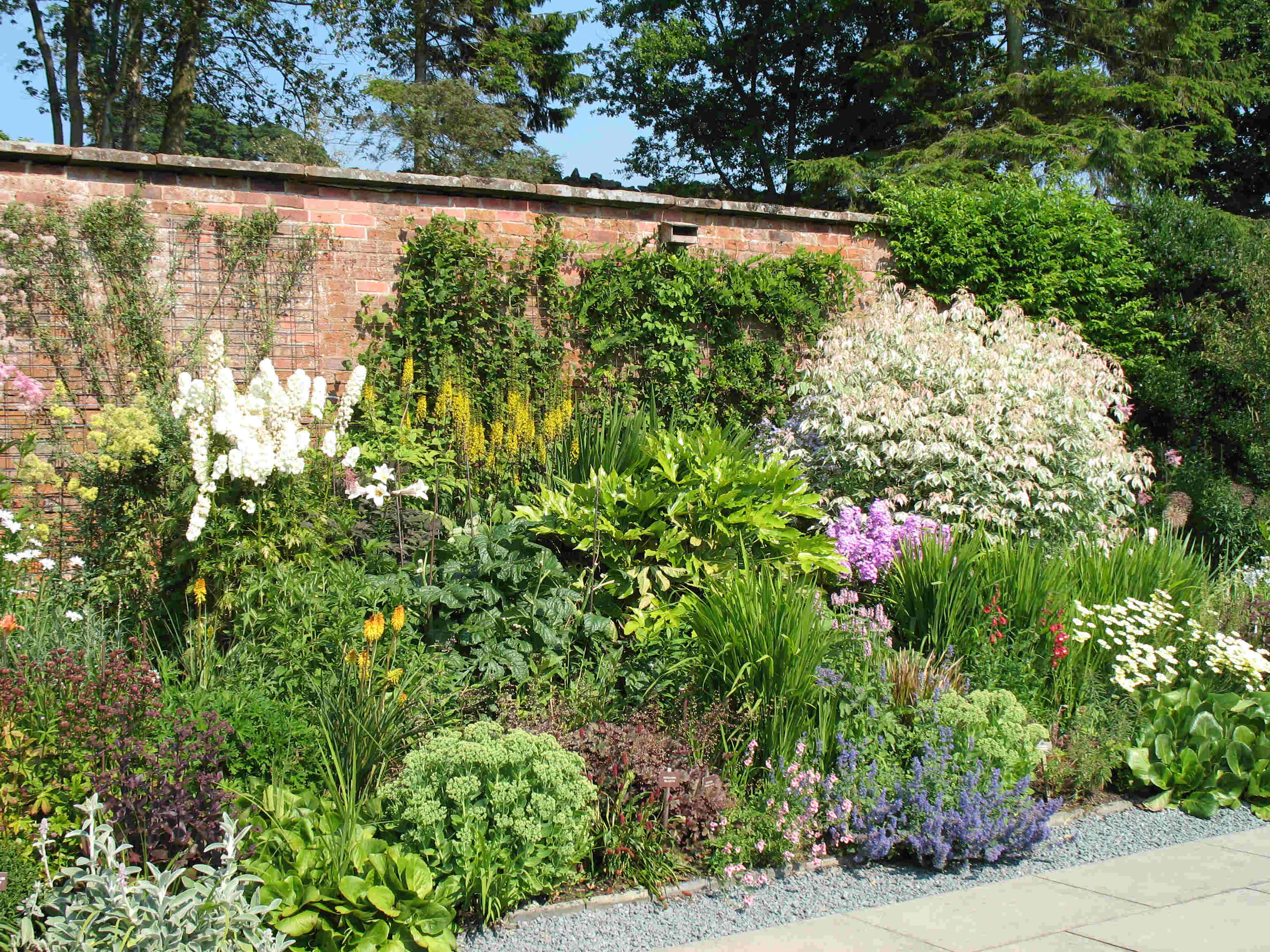|
|||||||||||||||||||||||||||
 Prospect
and refuge
Prospect
and refuge
Posted by James Wimberley
A travel snapshot from the English Lake District: the mouth of the tiny rivers Rothay and Brathay at the head of lake Windermere.

Why do we find this type of scenery attractive? There are broadly two explanations.
One
is that during the eighteenth century there occurred a historic
shift in taste. Around 1700 the ideal of landscape beauty was
cultivated, ordered, tamed; wilderness was feared. But as it became
scarcer, it became more prized. By the time of Wordsworth, Northern
Europeans had come to admire jagged mountains, waterfalls, and dark
ancient forests. The gardens of the rich changed from the
parade-order of Le
Nôtre to the Arcadian
parkland of Humphrey Repton and Capability Brown.
But
this story doesn't fit our picture well. Like almost all the
landscape of Europe, that in the photo is artificial.
Open parkland has to be maintained carefully over a long span of
time, the grassland by regular mowing or grazing by livestock, the
open stands of trees by fencing out deer and selective felling. Left
to nature, the climax vegetation of the area would be dense
deciduous forest like this, a few hundred yards upstream:

The first scene is only halfway to the full-blown Romantic wilderness of Caspar David Friedrich, here and here. In a sense, we obviously like it better. It's more liveable.
This is where the alternative explanation of evolutionary psychology comes in: we are hardwired to like landscapes of the savanna type, because this is the habitat where we evolved. Steven Pinker, How the Mind Works, chapter 6:
[In contrast to deserts and rainforests,] the savanna - grasslands dotted with clumps of trees - is rich in biomass, much of it in the form of large animals, because grass replenishes itself quickly when grazed. And most of the biomass is conveniently placed a meter or two from the ground. Savannas also offer expansive views, so predators, water, and paths can be spotted from afar. Its trees provide shade and escape from carnivores.... American children are shown slides of landscapes and asked how much they would like to visit or live in them. The children prefer savannas, even though they have never been to one... Of course, people do not have a mystical longing for ancient homelands. They are merely pleased by the landscape features that savannas tend to have ... semi-open space, .. even ground cover, views to the horizon, large trees, water, changes in elevation, and multiple paths leading out ... prospect and refuge, or seeing without being seen.
The leap to the theory that these ancestral practical advantages determine our sense of landscape beauty was made by George Orians and Judith Heerwagen, in a chapter in the key ev.psych. book The Adapted Mind by Barkow, Cosmides and Tooby of 1992. I couldn't find a link to the text, but here's a link to more recent online paper by Orians.
It's an immensely appealing theory. I've seen a herd of giraffes grazing acacias in the early morning in a Kenyan reserve and thought of Eden. The first objection that comes to mind is: what about caves? These are part of the optimal habitat, but in fact we find them scary. I suppose the reply is that caves only became essential with the move north to colder Eurasian habitats; you don't need them in tropical Africa and there aren't many anyway outside the Rift valley walls. The hardwired preference hasn't had time to change in a mere 100,000 years. (There were hominids much earlier in European and Chinese caves, but they weren't our ancestors.) A more serious objection is that the data are a bit thin. A human universal should be established by thorough anthropological fieldwork, waving photos like mine before New Guinea tribesmen, Yanomani Indians, Inuits, Tibetans, New Yorkers and so on. Perhaps this has been done, but I couldn't find it on Google; or for that matter any counter-evidence.
The liveable habitat is also a defensible one, with communications, water, and sightlines. Sure enough, the spot where I stood for my first photo is a hundred yards from the vestiges of a Roman fort.
On points Darwin wins against Wordsworth. The historical shift in taste did not really lead to an abandonment of the earlier ideal; the country houses kept parts of their ordered gardens. What happened was more a widening of taste to taken in wilderness as well. In fact the Romantics developed a different vocabulary to deal with it: hence those disquisitions on the Sublime and the Beautiful. The walled flower garden or paradise has never gone out of fashion since the Persians invented it 2,500 years ago. Here's an example from Troutbeck, a few miles down the same lake.

The diligent garden slaves needed for this fantastically labour-intensive style are here volunteer ladies from the Lake District Garden Society. Holding my ebony cane in my gloved left hand, I tip my top hat to them with the right.
Posted
at 12:34
AM
| TrackBack
(0) |
![]() |
|
Post a comment